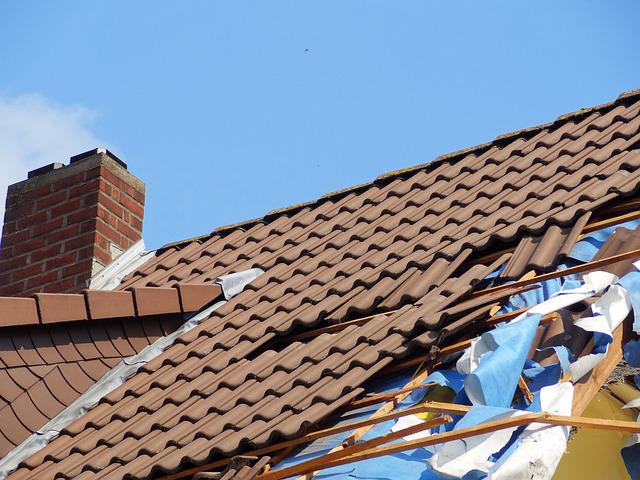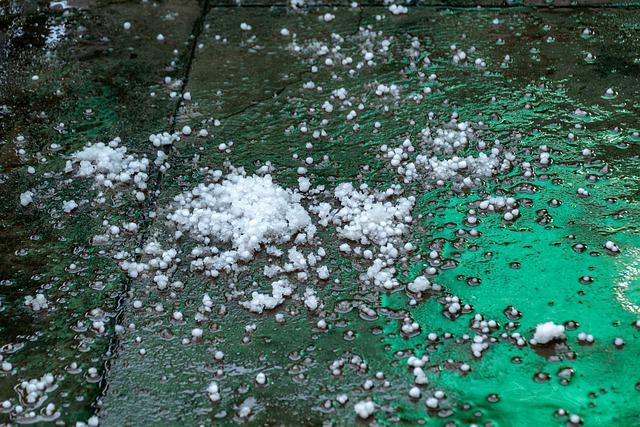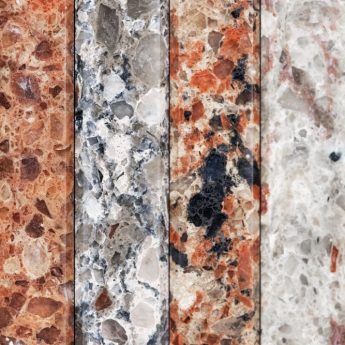Roof Storm Damage: 6 Types And Remedies

Your house may be fashioned to resist the effects of a storm, but chances are it’s seldom left unscathed when a storm hits.
Winds moving at monstrous speeds uprooting trees and blowing debris in all directions, snowstorms, hailstorms—all risk your roof and property’s structure. The degree of damage depends on the kind and severity of the storm, among other factors.
That’s why it’s crucial to engage the services of roofing experts like Revive Restoration Roofing or others to evaluate the damage and address any issues on your roof after a storm.
Below Are The Different Types Of Storms And Their Possible Remedies,
Let’s Checkout The Six Types Of Roof Storm Damage:
1. Hail Damage

Hailstorms may not last long, but they can cause significant damage to your roof. The extent of the damage is determined by the type of roofing material, the size and density of hailstones, and the intensity of the wind.
Even small hail pellets can have some impact on your roof. Hailstones cause dents and cracks on the roof and compromise the shingles’ integrity.
The loose granules may also expose the roof felt. If your roof has suffered hail damage, the downspouts and gutters will most likely have dents. Dents on the window sills, casings, and sidings indicate that the roof is also damaged.
Hail damage may not be apparent and may need an experienced eye to assess the extent of the damage. Look out for minor dents and cracks, which may slowly let water into your roof and gradually cause rot to the wood deck. Moisture and mold buildup also thrive in such conditions and cause costly and extensive damage to your home.
Hail Damage Cause Leaky Roofs, but it can be resolved using high-quality roofing material that can endure the impact of giant hailstones.
2. Snowstorm Damage
The continuous downpour from a snowstorm can accumulate and negatively impact your roof. The roof can sag from intense weight and create more space for water, ice, and snow to build up.
As the snow melts, it causes ice dams which can easily gain access into cracks and holes in your roof and gutter.
When the temperature drops, the water freezes, and the cracks expand. This freeze-and-thaw cycle will create larger cracks on your roof and cause shingles to move. As a result, this gives water easy access and thus inflicts more damage to your roof.
To combat the situation, keep gutters clean and apply heat tape along the seams to prevent ice formation. Fix any holes, cracks, dents, or leaks, and replace shingles immediately.
3. Impact Damage

Impact damage during a storm can result in a disastrous outcome. Trees and other debris blown by strong winds can fall on your house and other equipment and cause extensive damage.
Impact damage can create dents, cracks, craters, or bald spots from missing shingles on your roof. It can even cause the roof to cave in.
Using the latest architectural roofing technology can significantly minimize impact damage to your roof. You should also assess the health of the trees around your house and get rid of weak trees to mitigate damage in case of a storm.
4. Windstorm Damage
At one point, a windstorm can come howling and whistling as if alerting and threatening anything in the path of its destructive nature. Wind storms have the potential to tear the roof apart depending on their intensity.
They can cause stress points around the roof structure and can weaken it in time. A wind storm can lift, curl, or damaged shingles. It can also remove shingles and expose the roof felt.
If the damage caused covers less than 30% of your roof, repairing the roof can restore it back to shape. But if the damage is more extensive, you should consider replacing your roof.
5. Water Damage

Water damage after a storm may not be immediately visible. It can occur when water or moisture infiltrates the roof deck. It has long-term effects, which will only be noticed when your ceiling starts showing water stains. The walls begin to peel.
Sometimes you will see mold growth. It also has the potential to compromise your home’s structural foundation.
Clogged gutters may retain water running down the roof during a storm and can cause it to permeate through and enter cracks on the roof.
Inspecting the roof will be crucial to assess water damage after a storm. Where necessary, replace missing shingles, fix ‘ponding’ spots and cracks, and clean your gutters. Repainting the walls using stronger water-resistant paint will make them more resistant.
6. Rainstorm Damage
Persistent, heavy rainfall can loosen the mineral surface of your roof shingles, making them less resistant to weather conditions.
If your roof has cracks and holes during a rainstorm or if it’s compromised in any way, your home will be exposed to water leakages which, apart from being uncomfortable, can cause expensive damage to your home.
To remedy the situation, replace your roof with premium quality material, especially if it is old. For younger roofs, seal the cracks and holes in the roof and identify shingles that need to be replaced.
Conclusion
Roofs deteriorate with time, but minor issues that are ignored can accelerate their wear. They’re costly to repair, especially if the repair is considerable.
Maintaining your roof regularly is crucial because, aside from avoiding unnecessary costs, it acts as a critical structure that protects you from severe weather conditions.
Read Also:











Leave A Reply